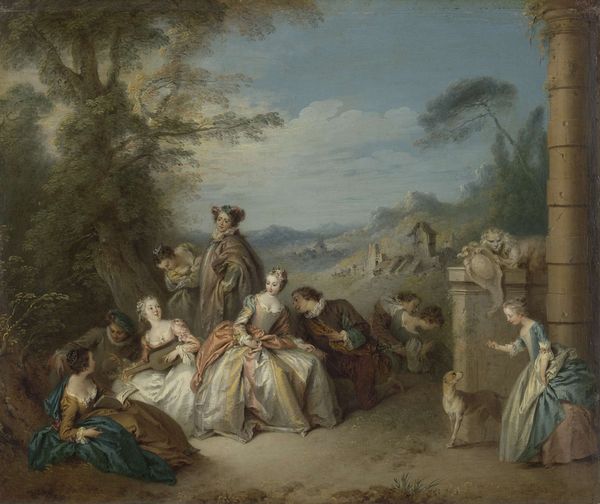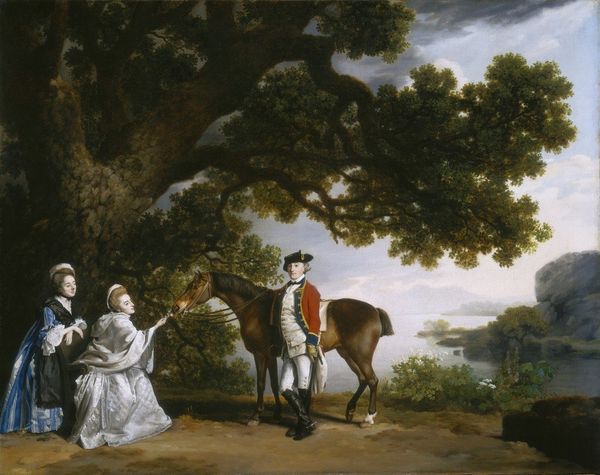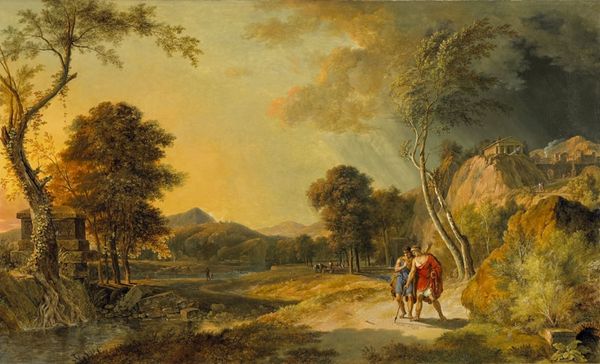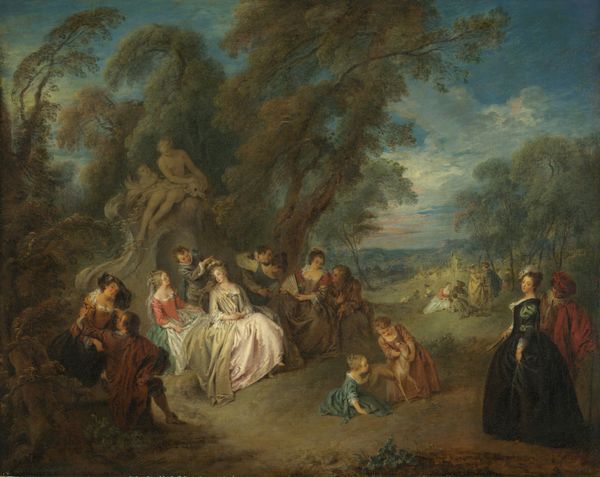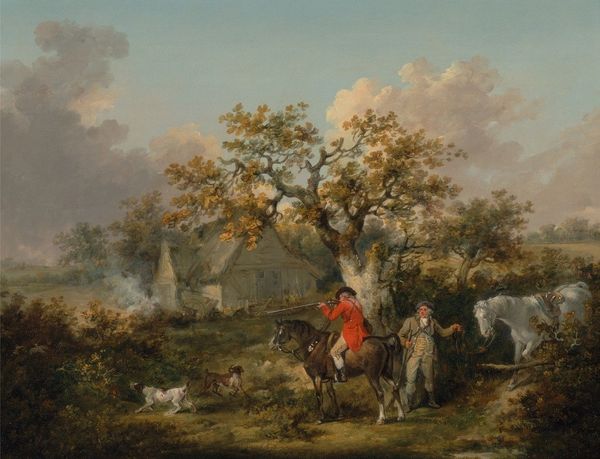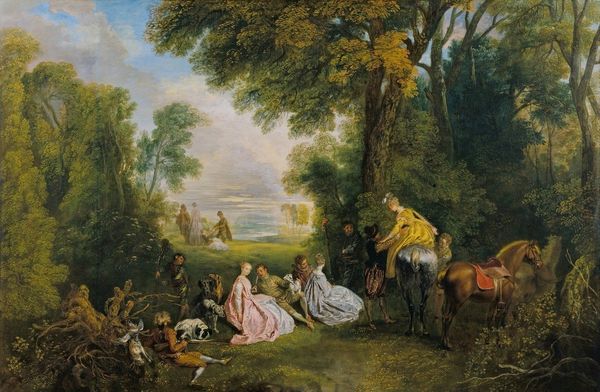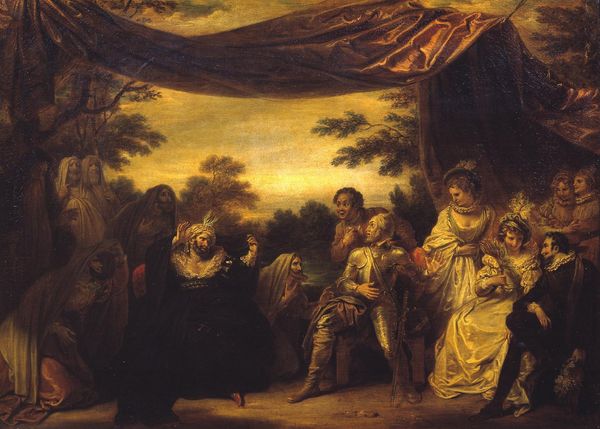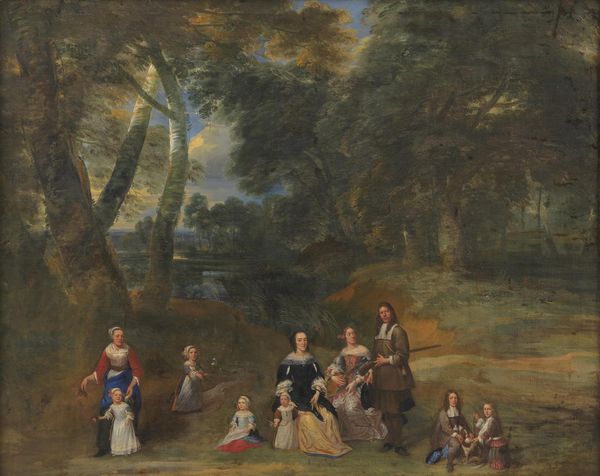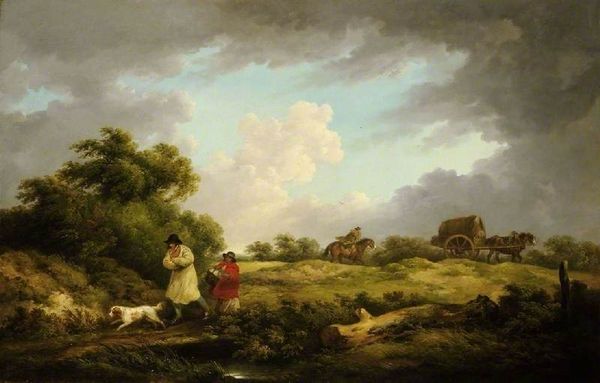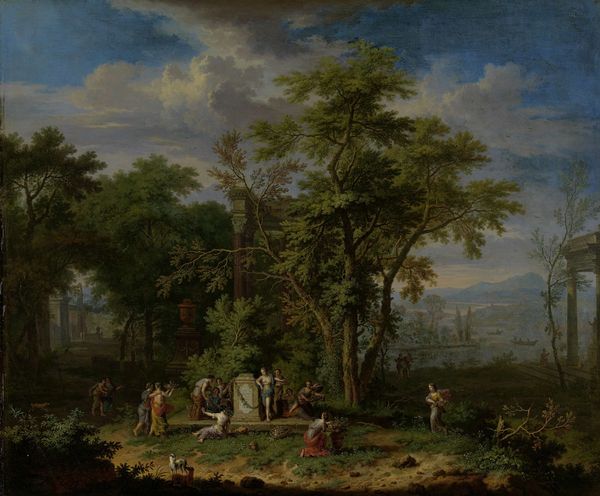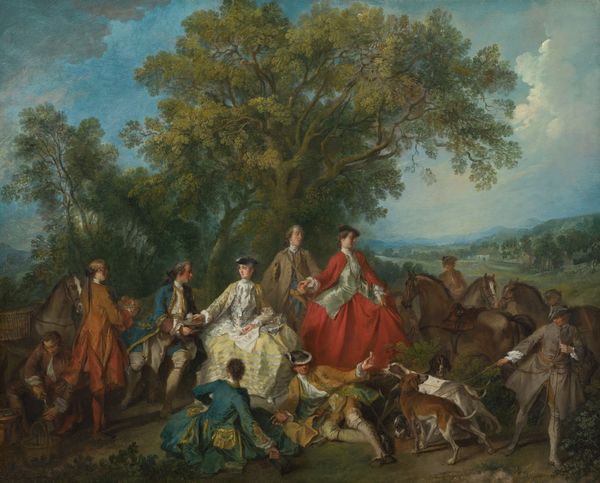
painting, oil-paint
#
portrait
#
baroque
#
painting
#
oil-paint
#
landscape
#
figuration
#
genre-painting
#
history-painting
Copyright: Public Domain: Artvee
Curator: Here we have an artwork titled "An Elegant Couple Meeting A Fortune Teller," an oil-paint work attributed to David Teniers the Younger. The scene depicts a gathering of figures in a vaguely pastoral setting. What catches your eye first? Editor: It’s wonderfully peculiar. The way the fortune teller is presented feels…I don't know, stagey almost. As though we are looking at an elaborate play and waiting to hear a certain preposterous fate that sounds hilarious. I feel as though I know how it will all end. Curator: Note how Teniers renders each figure distinctly – the clothes, the posture of the fortune teller suggesting a level of showmanship in this act of divination. It's hard to miss how meticulously everything is painted. Do you feel it elevates fortune telling, perhaps implying social importance? Editor: Elevates? No. Critiques, maybe? There is definitely an undercurrent of satire bubbling away, you know. The well-dressed couple seems oddly oblivious. The child and his dog mirror them, all looking towards this 'grand' fate, while this group on the left seem so much more 'real'. I imagine this piece acting like an early version of reality tv. Curator: Let’s examine that social backdrop a bit. We see a family on the periphery; observe the sharp contrast with the 'elegant' couple. Consider that these figures represent varied classes interacting within a constructed landscape, but is this simply to document the class distinctions? Is it a critique? Editor: Perhaps it's an invitation to look closely, to peel back the veneer of societal roles. To look around as you participate in a given moment, I can’t help but think about who gets the privilege of pondering their future in the first place. Fortune-telling is available to all; the kind of fortune-telling in a secure bubble, away from existential daily crises. I find myself thinking of who does what, with whose labor, and where these classes convene or diverge? The way the scene opens and closes on opposite families. Curator: So, if we see the family at left as labor, consider the raw materials needed to create clothing and other markers of wealth that allow for 'elegance'. How does seeing it presented in a landscape connect it back to an actual source? What implications are in the natural presentation? Editor: It certainly humanizes the family’s living situation while drawing that contrast even more. What I am left with here is an odd sense of comfort—knowing that perhaps the couple may meet their fate at any turn and realize they were worried about the wrong fortunes entirely. Curator: A grim outlook indeed, but that also highlights the complexities within the work’s perceived "simplicity," allowing for various interpretive frameworks to come forth. Editor: Ultimately, it nudges us to question our assumptions, to find humor in the strange stage of life, and of course to resist trusting any fate but the one you design for yourself, I suppose!
Comments
No comments
Be the first to comment and join the conversation on the ultimate creative platform.
